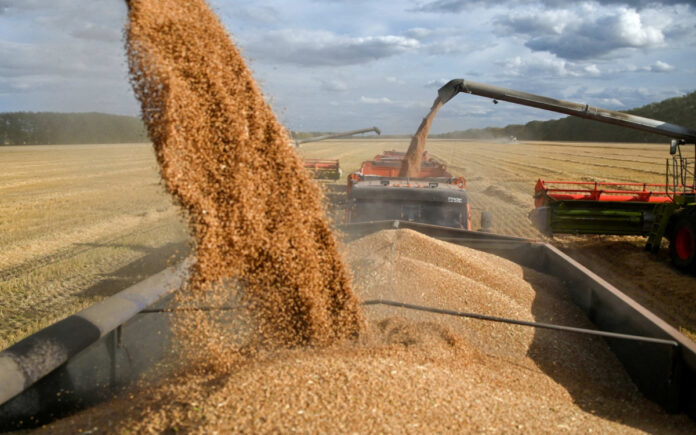New Delhi: India’s wheat harvest has surpassed expectations, allowing the country to comfortably meet domestic demand without resorting to imports—contrary to widespread market speculation. The strong output is rapidly replenishing state reserves, calming fears of a supply shortfall and potentially putting downward pressure on global prices.
India, the world’s second-largest wheat producer, had banned exports of the grain in 2022 and extended the curb after extreme heat damaged crops in 2023 and early 2024. That damage had depleted national stockpiles, driven prices to record highs, and sparked speculation that India would need to import wheat for the first time since 2017.
However, the tide appears to be turning. Early procurement figures suggest this year’s harvest could be 4 million metric tons larger than last year’s, according to six government and industry sources.
“After barely scraping through without imports in recent years, the country finally seems to be out of the woods and free from the fear of having to import wheat,” said Amit Takkar, head of New Delhi-based farm consultancy Conifer Commodities.
The Food Corporation of India (FCI), the government’s grain procurement agency, has already bought 29.7 million metric tons of wheat from farmers—its highest procurement in four years—after falling short of targets for three consecutive years. Food Minister Pralhad Joshi said earlier this month that total procurement could rise to 32–32.5 million tons this year. Combined with the 11.8 million tons already in stock as of April 1, FCI’s reserves could reach around 44 million tons.
This would far exceed FCI’s annual requirement of 18.4 million tons for its flagship food welfare programme, which provides free grain to nearly 800 million people. The bumper stockpile all but removes the likelihood of imports, according to the same six sources.
With India not expected to enter the international wheat market as a buyer, global prices could face renewed pressure. Top exporters like Argentina, Australia, and Canada have reported strong harvests, while demand from China—the world’s largest wheat consumer—has weakened. Global wheat prices have fallen sharply from their 2022 highs, recently touching a five-year low.
Imports Averted
India’s wheat output received a boost from several favorable factors, including improved weather, high-yielding climate-resilient seeds, and abundant soil moisture left by last year’s generous monsoon. In addition, a nearly 15% rise in wheat prices over the past year—driven by consecutive weak harvests—motivated farmers to expand wheat cultivation.
Farmers in Madhya Pradesh, a major wheat-growing state known for premium varieties used in pasta and pizza, reported strong yields this season thanks to a cooler-than-usual March.
“The weather was better this year compared to last year,” said farmer Sunil Dubey as he transported wheat-filled sacks to the bustling Indore wholesale market. Dubey, like many others, sold his entire crop to the FCI.
With its strengthened stocks, FCI is now in a better position to stabilize domestic prices by releasing grain onto the open market if needed. In the fiscal year ending March 2024, FCI released over 10 million tons into the open market to cool prices—a record intervention. However, limited stocks in early 2025 had constrained such market operations, pushing wheat prices to all-time highs.
The current surplus has boosted the government’s confidence in controlling both supply and pricing.
India has no plans to reduce or eliminate the current 40% import tax on wheat, nor is it exploring diplomatic channels for grain purchases, a senior government official confirmed.
“Because of good production and procurement, we have ample quantities in hand,” the official said on condition of anonymity. “There will not be any imports.”
The official also clarified that India is not considering lifting its export ban, opting instead to prioritize stock-building for future stability.
Also Read | Tehran May Permit U.S. Inspectors Under Future Nuclear Agreement
The government projects a record wheat output of 115.4 million tons this year, although the Roller Flour Millers Federation of India estimates a slightly lower figure of 109.63 million tons—still significantly higher than last year’s production of 105.85 million tons. The agriculture ministry had pegged the 2024 output at 113.29 million tons.
Industry representatives have long argued that the ministry’s optimistic forecasts create confusion in the market.
“Despite our conservative estimate, we know that production will be around 4 million tons higher than last year,” said Navneet Chitlangia, president of the Roller Flour Millers Federation of India.



